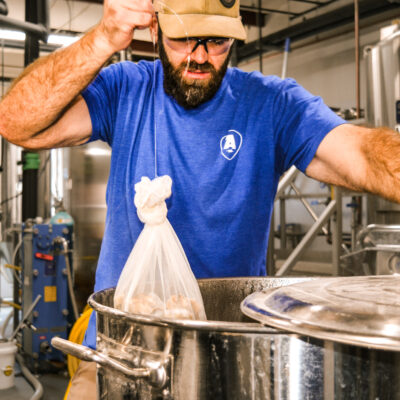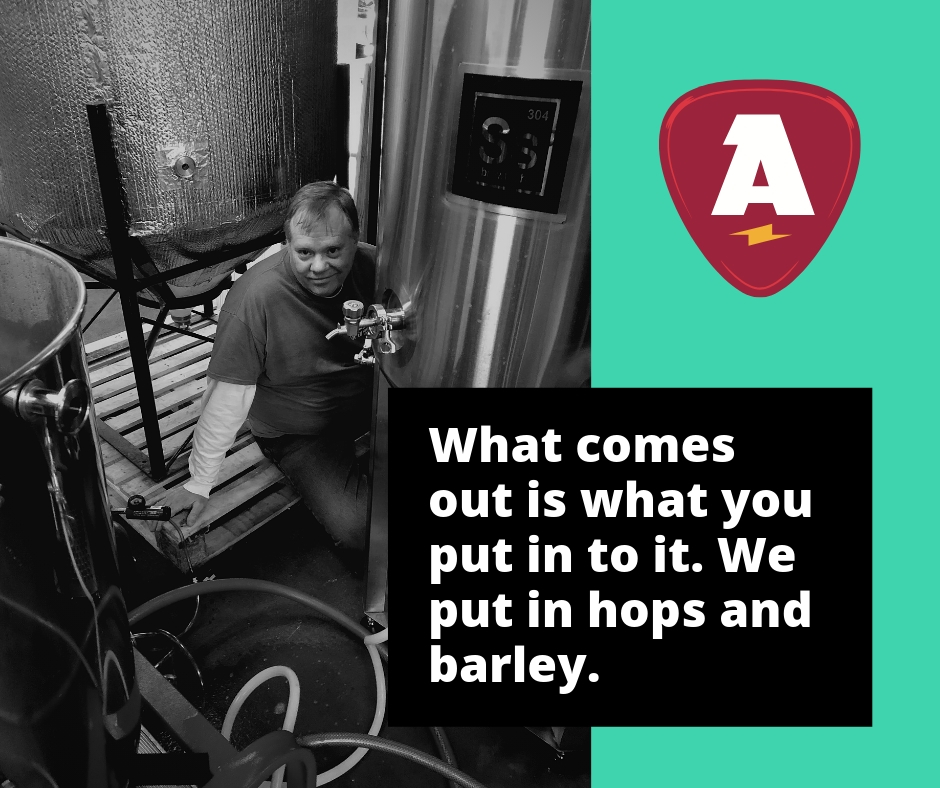“A rose by any other name would smell as sweet”
The Maibock, an 18th-century German-style bock, goes by various names across regions. Maibock, which means “May beer,” is also called a Heller Bock, Helles, or Lente Bock in some European areas.
Originating in Munich, brewers combined traditional methods with 18th-century technology to craft the Maibock, a seasonal beer symbolizing the transition from spring to summer. The style is a type of German Lager, coming from the stereotypically roasty, malty, and rich Bock family. The Maibock does follow traditional Bock brewing techniques but uses paler malt and more hops to balance out the malt bill, leading to a more aromatic and cleaner-tasting beer.
The Bock Family

Bock beer has a rich history that spans several centuries, continents, and cultures, beginning in the 14th century in Einbeck, Germany.

Einbeck, Germany
Einbeck served as the largest trading seat of Northern Germany, and just so happened to be in Europe’s hop-growing region, and their beer was the first to use hops. Einbeck could actually export their beer because of the hops’ preservation and antimicrobial properties.
Einbeck’s beer was revolutionary, using the palest malts available, and was brewed only in the winter and lagered for long periods of time. Meanwhile, the rest of the world wasn’t using hops just yet– they still brewed with gruit, an herb mixture, for bittering and flavoring beer. Münich, the de facto brewing capital of the world, wanted their beer to be on par with Einbeck’s, which was harder and harder to get due to the ongoing conflict, the Thirty Years’ War, impact on trading.
Germans loved Einbeck’s style of beer so much that the city leaders of Munich invited the renowned Einbeck brewer, Elias Pichler. He taught the Munich brewers his process of making Bock beer, and the style became a staple of the region, and later, the world.
The traditional bock is dark, bottom fermented, lightly hopped, and usually has an ABV between 6-7%.
Bridging Two Worlds Through Malt
Until the 19th century, pale malt wasn’t widely used. Einbeck brewers used the lightest available, but even then, the beer was still significantly darker than what we’re accustomed to today due to the malt-roasting technology at the time. Roasting malt was tricky business– maintaining a consistent temperature was incredibly difficult, and malt came out at worst, burnt, and at best, uneven, smokey, and dark.
Everything changed in the 19th century when a British engineer, Daniel Wheeler, invented a revolving drum kiln that was easier to control and allowed for more precise killing.

Daniel Wheeler’s mock-up revolving drum kiln
The new style of drum kiln made its way to Pilsen, Czech Republic, where brewers created incredibly popular new styles such as the Bohemian Pilsner, leading the very town to be named after the Pilsner Malt.
Traditional bock styles were widely associated as seasonal beers, especially for festivals and holidays. Bocks were brewed to be consumed in the winter, while the stronger doppelbock was made for the early spring. There was a gap in the market, and a beer for the late spring/early summer was needed.
This vacuum was filled when Münich brewers made a beer with a similar malt bill as the popular Czech Republic styles, but with their own twist. Using Bock brewing techniques, they created a brand new style of bock, and just in time for the annual May Day celebrations. Named after the ongoing festivities at the time, the Maibock drank like a strong lager with the familiar malt presence that Munich was famous for, except with a paler roast.

Traditional May Day celebration in Germany
Germans, and Lagers, and Goats, oh my.
Bock translates to goat in German, and the animal is often associated with the style, seen in beer packaging, advertisements, and art. So what’s the deal? Lost to history, the real reason remains unsolved, but there are a few good theories:
1.) Goat violence
Due to the strength and high alcohol content of the Bock styles, the beer was said to “kick like a goat,” and when bar patrons fell out of their stools from one too many Bock beers, the patrons would say “a goat kicked their chair”, and the name eventually stuck.

Vintage Bock poster
2.) Astrology? Capricorns? Monks? Beer? What?
During medieval times, old German monasteries would brew a strong bock as a source of nutrition during their Lenten fasts. Others believe it was made with more of a pagan connotation, only being brewed during the sign of the Capricorn
goat, hence the name “Bock”.

Vintage Bock beer label
3.) We’re in Athens, Georgia, so we’re no stranger to thick accents, and neither was medieval Germany
Bocks were first brewed in the northern part of Germany in Einbeck, then gaining popularity down south in Bavarian Münich. Due to their thick, southern accents, citizens of Münich incorrectly pronounced Einbeck as ein Bock, meaning billy goat in German, and thus the beer became known as Bock.
Brewing a Maibock
Maibocks stay true to their German roots and typically use all German ingredients. They generally feature Pilsner malt, Vienna malt, and/or Munich malt. Hops are more prominent in Maibocks as compared to other bocks, but remain very mild and approachable. Noble hops are used to give the beer those floral, grassy notes that are reminiscent of spring. European lager yeast strains are used but most lager yeasts work great for brewing this beer.
Appearance: Has a distinct gold color, almost straw-like with a nice white, foamy head. Very clear. Medium to fast rising bubbles.
Aroma: Subtle malty sweetness and floral, grassy notes. Pleasant, light aromatics that are not overwhelming.
Mouthfeel: Soft body with medium to high carbonation. Short to medium finish. Drinks smooth despite the presence of lots of bubbles.
Taste: Crisp, floral, aromatic hoppiness at the forefront followed by notes of malt and baked bread. Less malt-forward than other blocks. Little to no hop bitterness. Clear notes of earth and honey round out the taste to give balance
The Maibock stands as a testament to the resilience and adaptability of brewing traditions. As we savor each sip of this historic brew, we not only taste the craftsmanship of generations past but also the boundless creativity of modern brewers. At Athentic, our own Maibock, GOAT, reflects our commitment to honoring the rich heritage of beer while pushing boundaries with innovative techniques and ingredients. So, as we raise our glasses to toast the Maibock, let us also raise a toast to the enduring spirit of exploration, discovery, and community that defines the world of craft brewing. Here’s to the Maibock—may its legacy continue to inspire and delight beer lovers for generations to come.
Cheers!














 op 20 US Beer Festival for Beer Geeks (by Connoisseur Magazine). As an added bonus to our excitment at being at Brew Fest, all proceeds go to benefit the Athens Area Humane Society! In honor of the festival and its chosen charity, we decided to break out our Wee Heavy Scottish Ale, a “take no prisoners”
op 20 US Beer Festival for Beer Geeks (by Connoisseur Magazine). As an added bonus to our excitment at being at Brew Fest, all proceeds go to benefit the Athens Area Humane Society! In honor of the festival and its chosen charity, we decided to break out our Wee Heavy Scottish Ale, a “take no prisoners”